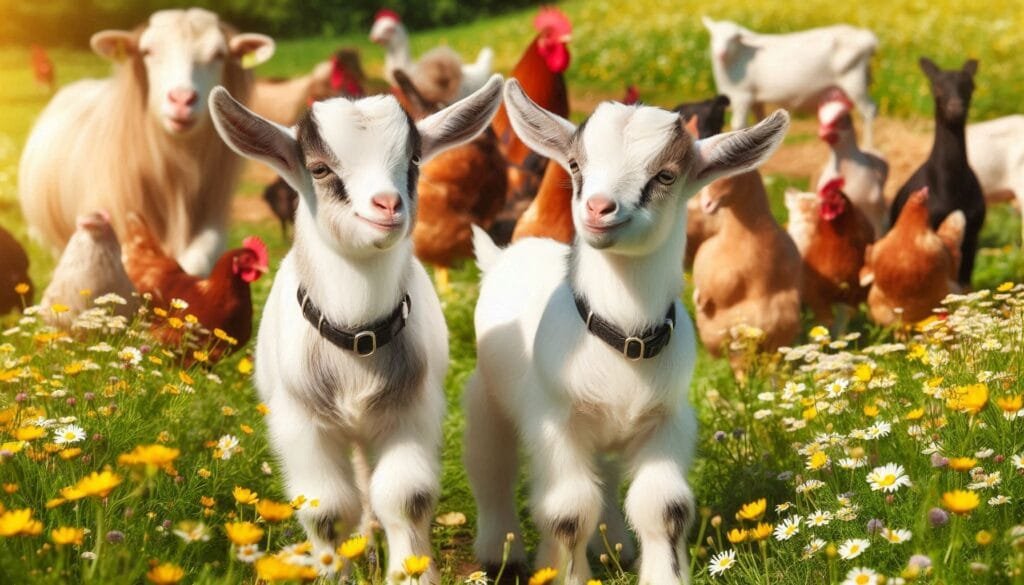Optimal Feeding for Lactating Ewes

Feeding Lactating Ewes for Optimal Milk Production
Lactation is a critical period for ewes, demanding significant nutritional support to ensure both the ewe’s health and the growth of her lambs. Proper feeding during this time can significantly influence milk yield, lamb growth rates, and overall flock productivity. This article explores the essential aspects of feeding lactating ewes, focusing on nutritional requirements, feeding strategies, and management practices.
Nutritional Requirements of Lactating Ewes
Lactation places the highest demands on a ewe’s nutritional intake. After lambing, a ewe’s energy and protein needs increase dramatically. Here are the critical nutritional components:
- Energy Needs:
- Ewes nursing twins may require up to 60% more energy than their maintenance needs. For instance, an 80 kg ewe can need about 34 MJ ME/day at peak lactation.
- Energy is crucial for milk production; insufficient energy leads to reduced milk yield.
- Protein Requirements:
- Protein needs also rise significantly during lactation. Ewes may require 44% more protein compared to their maintenance levels.
- A balanced diet should ideally contain around 14% protein to support optimal milk production.
- Water Intake:
- Water is vital; lactating ewes can drink up to 9 liters per day, nearly double the amount required by non-lactating ewes.
- Ensure a constant supply of fresh water to support hydration and milk production.
Feeding Strategies for Lactating Ewes
To meet the increased nutritional demands during lactation, implement effective feeding strategies:
- Group Feeding:
- Separate ewes based on the number of lambs they are nursing (singles, twins, triplets). This practice allows for tailored feeding that meets specific energy and protein needs.
- Grouping helps prevent over- or under-feeding among different ewe categories.
- Quality Forage:
- High-quality forage is essential. Alfalfa hay is an excellent choice due to its high energy and protein density.
- Monitor pasture quality and height. Ewes typically consume more dry matter as pasture height increases, peaking at around 6–9 cm.
- Supplemental Feeding:
- If pasture quality is inadequate, provide supplemental concentrates. A general rule is to offer 1 pound of grain per lamb being nursed.
- Concentrates should be high in energy (around 12.5 MJ ME/kg DM) and contain sufficient crude protein (16-18%).
- Creep Feeding:
- Introduce supplemental grain to lambs while they are still nursing. This practice can enhance weight gain and overall health.
- A simple creep ration could consist of 80-85% ground corn and 15-20% soybean meal, along with high-quality hay.
Managing Nutritional Risks
Several risks can affect the nutritional status of lactating ewes:
- Hypomagnesaemia:
- This condition can occur due to insufficient magnesium intake, especially in lush pastures.
- To mitigate this risk: Avoid potash fertilizers on early lactation pastures.
- Acidosis:
- Over-reliance on cereals can lead to rumen overload and acidosis.
- Split meals into smaller portions (no more than 0.5 kg per meal) to avoid digestive issues.
- Monitoring Body Condition:
- Regularly assess body condition scores (BCS). Ewes should not lose more than 0.5 BCS units from lambing to weaning.
- Weight loss increases protein requirements; adjust feed accordingly.
Transitioning from Late Pregnancy to Lactation
The transition from late pregnancy to lactation is crucial:
- Flushing:
- Flushing involves providing extra nutrition before breeding to improve ovulation rates.
- This practice can enhance embryo survival during early pregnancy.
- Diet Changes:
- Gradually transition diets from late pregnancy rations to those suitable for lactation.
- Sudden changes can stress ewes and negatively impact milk production.
Conclusion
Feeding lactating ewes requires careful planning and management to meet their heightened nutritional demands. By focusing on energy, protein, water intake, and quality forage, farmers can enhance milk production and promote healthy lamb growth. Implementing group feeding strategies and monitoring body condition will further optimize flock performance during this critical period.
In summary, proper nutrition during lactation not only benefits individual ewes but also contributes significantly to the overall productivity of the flock. By following these guidelines, farmers can ensure that their ewes remain healthy and productive throughout the demanding lactation period.
For more pearls of Vets Wisdom:
https://wiseias.com/partitioning-of-food-energy-within-animals/





Responses